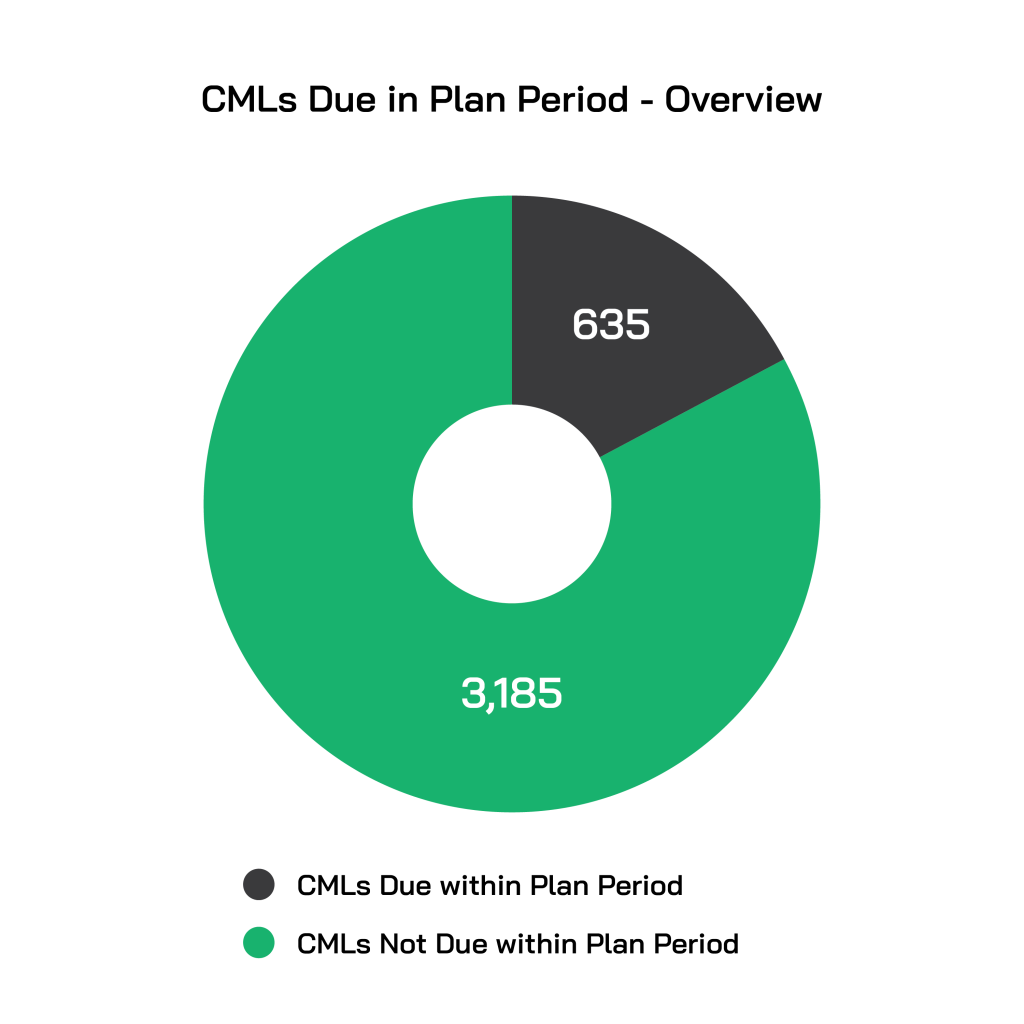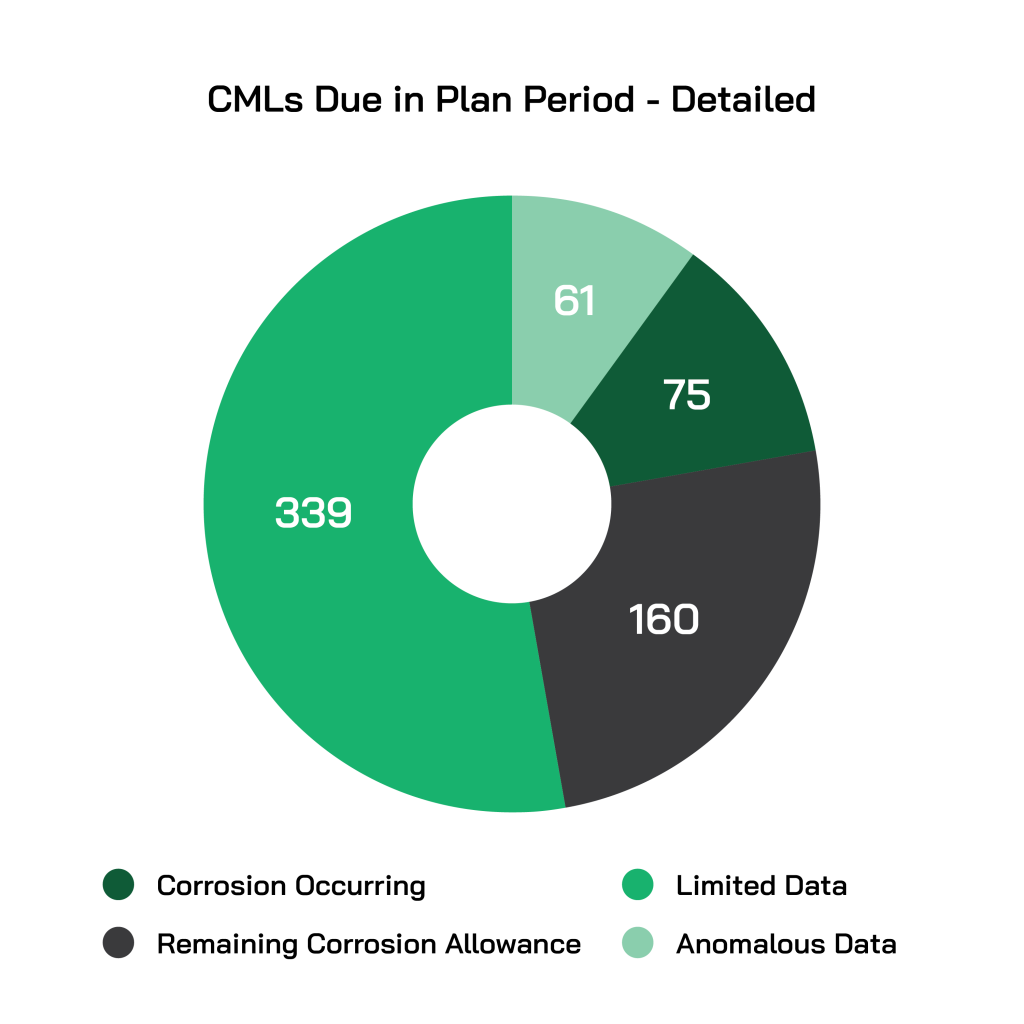Managing the integrity of critical assets is necessary for safe and reliable operations while mitigating potential environmental risks. This article shares a recent corrosion monitoring program case study to demonstrate how advanced optimization techniques can help streamline a client’s inspection efforts to reduce costs and improve overall operational efficiency.
An independent Gulf Coast-based refining company contacted CorrSolutions LLC to discuss how to improve their corrosion monitoring program by optimizing the condition monitoring locations (CMLs) within their atmospheric crude unit. The optimization efforts were needed so the facility could perform the right type and number of thickness inspections in the correct locations at the optimum timing. Their goal was to continue operating safely, reliably, and in an environmentally friendly manner.
Previous inspection efforts resulted in more than 16,000 thickness measurements using traditional CML placement and inspection techniques. The client needed to analyze all data to ensure that inspection resources were being effectively deployed and that areas of concern were identified for necessary follow-up actions. Traditional CML optimization efforts typically focus on estimating remaining life using point-to-point corrosion rate analysis methods and do not take consequence of failure or corrosion subject matter expert (SME) opinion into account. While reducing inspection costs was a client goal, the client was not willing to remove CMLs if the resultant inspection plan exceeded the risk threshold of their facility.
The client chose CorrSolutions for this optimization work because our patented Bayesian Optimized Asset Reliability (BOAR) can generate corrosion rates that blend corrosion SME opinion with client inspection data to deliver a CML level inspection plan that takes overall risk into account.
CorrSolutions uses a patented hierarchal Bayesian modelling methodology and Markov chain Monte Carlo (MCMC) simulation to model the predicted thickness and probability of failure (POF) for CMLs based on inputs from priors, inspection and corrosion knowledge, and the historical thickness measurements. The hierarchal Bayesian modelling process allows CMLs to both borrow strength from one another but also behave independently as dictated by the data. The thickness projection plots and POF plots are used to help determine CMLs that should be included in the inspection plan.
The CorrSolutions BOAR analysis also includes the ability to:
- Predict the thickness measurement error (based on both inspection technique and age of measurement).
- Account for data management techniques where multiple measurements are taken but only the lowest reading is documented in the client inspection data management system (IDMS).
- Model individual examination points when localized corrosion may be occurring within a component.
- Account for historical changes in corrosion rates based on process conditions.
Using the BOAR methodology, CorrSolutions developed a method to extract the required data from the client’s IDMS, then begin the analysis process to look for instances of questionable nominal thicknesses, retirement thicknesses, and thickness measurements that exceeded expected measurement variability (data validation). During this process, we organized the data into similar corrosive environment groupings to allow clearer visualization of potential corrosion issues.
Our corrosion SME reviewed the operating conditions with plant personnel to develop credible corrosion damage mechanisms and their respective rates, which were input into the BOAR analysis along with the client data for each CML grouping. The visual reports generated by the BOAR analysis allowed an inspection SME to quickly review the projected thicknesses of more than 3,800 individual CMLs and use that information to develop the inspection plan.

After performing the BOAR analysis and developing the circuits’ CML level inspection plans, CorrSolutions recommended 58% of the active CMLs on the atmospheric crude unit be archived based on their POF calculation during the twenty-year inspection plan period. This CML reduction delivered immediate cost savings for the next inspection cycle. CorrSolutions also recommended extending inspection intervals on CMLs that were going to remain active for the same POF reason, which will deliver additional inspection cost savings going forward. Reducing active CMLs and decreasing the inspection frequency will result in a 79% reduction in corrosion monitoring costs over the inspection plan period for the CMLs analyzed. These cost savings do not include associated maintenance costs (e.g., scaffolding and insulation work) for CMLs.
In addition to the above CML reductions, the BOAR analysis identified areas of potential localized corrosion in the client’s overhead system. CorrSolutions also recommended that the client add previously uninspected areas to the inspection efforts on this circuit to address areas of potential localized corrosion. Unlike the BOAR analysis results, traditional CML optimization efforts typically only focus on data for existing CMLs and how many fittings or feet of pipe are included in the circuit, rather than provide a detailed list of specific locations recommended for inspection.

The BOAR analysis also categorized why a CML was due for inspection within the plan period. It was determined that the remaining corrosion allowance (tactual – trequired) was the cause for inspection on 4% of the CMLs analyzed. Using BOAR to evaluate the current trequired value being used with fitness-for-service (FFS) assessments could eliminate future condition-based inspections or allow for proactive repairs to be completed. Another benefit of the BOAR analysis is improved timing of maintenance activities and potential reduction of unplanned maintenance activities for piping replacements. Industry reports indicate that planned maintenance activities are typically executed at one-third of the cost of emergency maintenance activities, so improving the ability to accurately plan maintenance activities can deliver additional savings to the facility.
The project also delivered circuit boundary optimization recommendations based on damage mechanisms and observed damage rates. By reducing the number of unique circuits within the inspection program, the client can improve the efficiency of performing API 570 external inspections and the resultant repair recommendations. While this project was performed on an atmospheric crude unit in a refinery, similar methodologies can be applied to model future thicknesses of piping and piping components in other refinery units, as well as all industries where piping thickness inspections are performed.
Finally, when optimizing CMLs, the goal is to efficiently place CMLs where they deliver statistically representative and significant data that will accurately predict corrosion. CorrSolutions’ BOAR analysis is a more informed and detailed inspection plan that efficiently utilizes client resources to maintain the corrosion monitoring program at an acceptable level of risk. Therefore, the successful implementation of CorrSolutions’ BOAR analysis at the Gulf Coast refinery reinforces the potential benefits of applying these advanced optimization techniques throughout a facility. CorrSolutions’ total asset support helps owner-operators improve their asset integrity programs, mitigate risks, and increase operational reliability.





